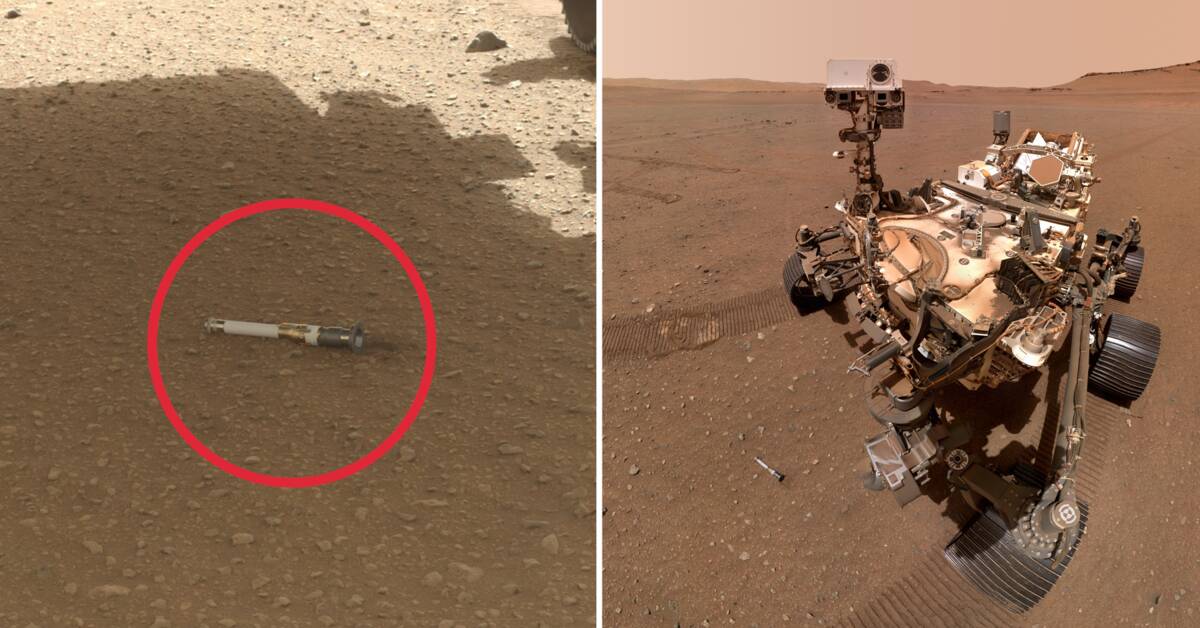Perserverance landed in Jazero Crater on Mars in February 2021 with the mission of searching for traces of life on our neighboring planet.
Today, Mars is a dry desert, but the landscape tells the story of what was once there.
The Jazero crater has been filled with water and there are clear traces of what looks like a delta.
The presence of flowing water during the early history of Mars means that life could have developed there then.
The tree-like formation is itself part of the Jazero Crater.
The red dots show where it has dropped its samples.
Photo: NASA
Loose gravel and gases
Perserverance is equipped with analytical instruments and conducts on-site investigations.
But the samples that Perserverance has now prepared and which will be sent to Earth are the ones that the researchers hope for the most.
In addition, Perserverance will do more sampling on the surface of Mars.
Sandra Siljeström is an astrobiologist at the research institute Rise and a so-called "returned sample scientist" in the scientific team for Perseverance.
She helps select the samples to be collected on Mars.
- Both drill cores and loose gravel from the surface are called regolith.
In one of the tubes, gases from the Martian atmosphere have also been collected.
Sent to Earth in ten years
Right now, the craft that will bring the test tubes home to Mars are being built and at the end of the 2020s they will be launched.
The Mars samples are not expected to arrive on Earth until 2033.
Watch the film "Extraterrestrial life" in Vetenskapen värld, which is about the search for traces of simple life forms on our neighboring planet, in SVT Play or on Monday 13 March at 20.00 in SVT2.

